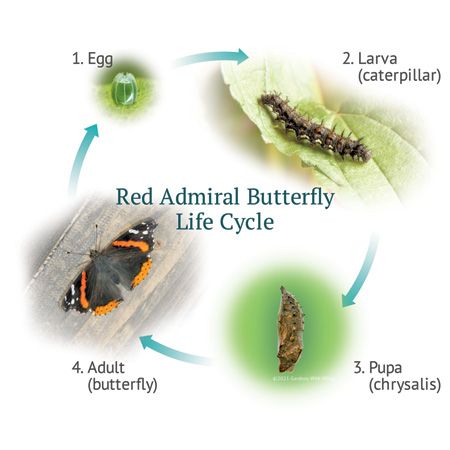What is the difference between a butterfly and a moth?

The main difference between butterflies and moths lies in their antennae. Butterflies typically have thin antennae with club-shaped tips, while moths have varied antennae, ranging from thin and straight to feathery. For more detailed information, check out our article: Butterflies, moths, skippers; really… what is the difference?
What is the life cycle of a butterfly?

The butterfly life cycle is a fascinating four-stage process called complete metamorphosis. It begins with an egg, which hatches into a larva (caterpillar). The caterpillar grows and molts several times before entering the pupa stage (chrysalis). Inside the chrysalis, a dramatic transformation occurs, and finally, an adult butterfly emerges. Want to learn more about each of these amazing stages? Read our full article on The Amazing Butterfly Life Cycle.
What happens to butterflies in the winter
Many butterflies migrate south for the winter, like the famous Monarch. Others, like the Mourning Cloak, overwinter locally. They find sheltered spots and enter a state of diapause, a type of hibernation, to survive the cold. But what about the other life stages? Learn more about how caterpillars, eggs, and chrysalises handle the winter by reading our article on Overwintering Strategies.
How long do butterflies live?
Butterfly lifespans vary greatly depending on the species. Some, like the Tiger Swallowtail, live only 2-4 weeks, while others, like the Mourning Cloak, can live for 8-10 months. For more information on butterfly lifespans and the factors that influence them, read our article: You Won’t Believe How Long Butterflies REALLY Live!
Why are butterfly antennae important?

Butterfly antennae are crucial for survival. They’re not just for show! These club-shaped appendages are packed with chemoreceptors, which are like taste buds, helping butterflies “taste” their environment. This allows them to find nectar-producing plants and for males to detect female pheromones. Antennae also house Johnston’s organ, essential for balance and orientation during flight. Want to learn more about butterfly anatomy? Visit our page on The Anatomy of Butterflies.







